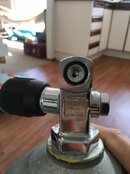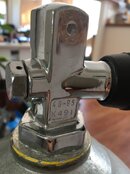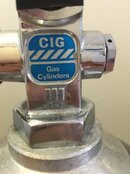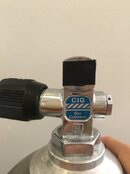Aquanaut2000
Registered
I was wondering why our LDSs weren't filling our tanks as much as we wanted and found out that there are many odd tank and valve combos that cross the shop's path. I've got two tank valves that I'm not sure of on my tanks. Can anyone ID them and I'll search up what max pressure (bar) they are rated to?
Many tanks
Many tanks









